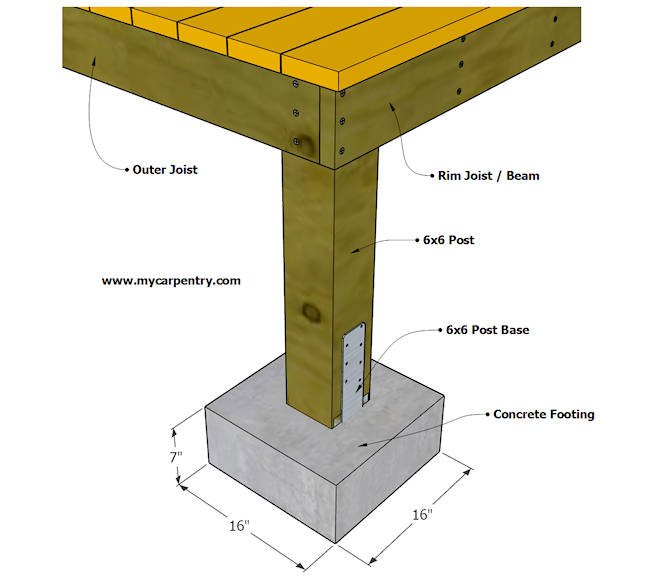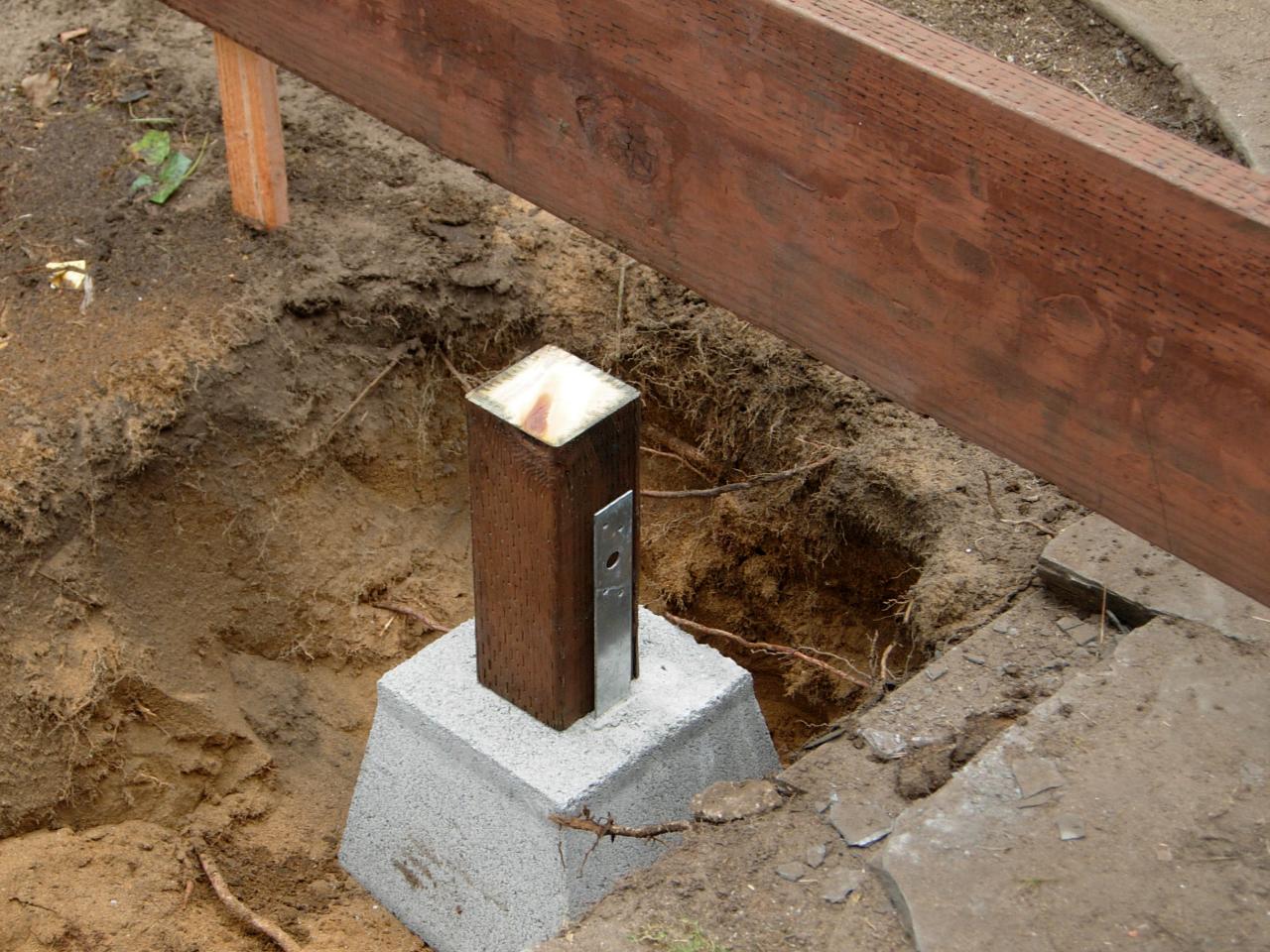Selecting the Right Deck Footings for Stability and Durability
The long life and safety of your deck depend heavily on the kind of grounds you choose, as they supply the important assistance and security to withstand the test of time. In this conversation, we will check out the numerous kinds of deck footings, consider the crucial factors to weigh when making a decision, and dig right into the pros and disadvantages of different alternatives.
Sorts Of Deck Grounds
There are numerous kinds of deck grounds that can be utilized, each offering distinct benefits and factors to consider. One usual type of footing is the concrete pier footing. These footings contain a round hole filled up with concrete, which gives a strong structure for the deck blog posts. Concrete pier grounds are fairly simple to set up and use superb security, making them a prominent selection for several deck tasks.
These grounds are set up by screwing them into the ground, which develops a safe and secure structure for the deck. They likewise enable for easy change and leveling of the deck if needed.
Alternatively, some contractors go with precast concrete footings. These grounds are made of durable concrete and can be found in different shapes and dimensions to fit different deck styles. Precast concrete footings are hassle-free to mount and supply a stable base for the deck framework.
Lastly, another alternative is the post-in-anchor ground system. This sort of ground includes driving a steel anchor into the ground and connecting it to the deck article. It offers adaptability in regards to positioning the deck posts and is ideal for decks with lightweight frameworks.
When choosing the ideal sort of deck footing, it is important to take into consideration factors such as dirt conditions, deck lots, and neighborhood building regulations (Deck Footings). Consulting with a specialist contractor or structural designer can assist guarantee the ideal footing is selected for a stable and secure deck
Factors to Think About When Picking Grounds
When selecting the appropriate grounds for a deck, it is crucial to very carefully take into consideration various elements such as dirt conditions, deck lots, and adherence to neighborhood building regulations. These factors play a considerable function in making certain the stability and sturdiness of the deck framework.
The type of dirt on which the deck will be built identifies the kind of grounds needed. On the other hand, decks built on clay or large soils might require footings that can fit the soil's propensity to increase and contract.
Another crucial factor is the deck tons. The weight of the deck, including the products used and any type of potential online lots such as furnishings or gatherings, have to be considered when picking grounds. The grounds should be developed to bear the weight of the deck and distribute it equally to stop any type of architectural problems or failures.
Finally, adherence to neighborhood building ordinance is vital. Building codes differ from area to area, and it is necessary to adhere to the specific requirements set by the neighborhood authorities. Deck Footings. These codes guarantee that the deck is constructed securely and fulfills the needed standards for architectural honesty and load-bearing capacity
Concrete Footings: Cons and pros

Concrete footings offer a number of advantages and disadvantages when utilized as the foundation for a deck. On the positive side, concrete footings offer outstanding security and toughness.
One more benefit of concrete grounds is their versatility. They can be put into different sizes and shapes to accommodate numerous deck designs and configurations. Concrete footings can be customized to fit the certain needs and demands of the deck framework.
Nevertheless, there are also some disadvantages to making use of concrete grounds. This can enhance the overall expense of the deck project and might need expert aid.

Helical Piers Vs. Sonotubes: Which Is Better?
In considering the foundation options for find out this here a deck, the contrast in between helical piers and sonotubes is important in identifying the premium option. Helical piers, likewise known as screw piles, are steel shafts with helical plates affixed to them. They are twisted into the ground using hydraulic equipment, giving a sturdy and stable foundation for the deck. On the other hand, sonotubes are round forms made from cardboard or fiber product that are full of concrete. They are put in an opening went into the ground and give support for the deck.
The helical plates on the piers develop a strong hold with the soil, moving or preventing any kind of movement of the deck. Sonotubes, on the various other hand, rely only on the concrete filling up for stability, which might not use the same degree of strength and resistance.
In terms of installation, helical piers are fairly simpler and faster to mount compared to sonotubes. The hydraulic machinery made use of to twist the piers right into the ground guarantees a fast and efficient process. Sonotubes, on the various other hand, call for digging holes and putting concrete, which can be time-consuming and labor-intensive.
Additionally, helical piers are an even more flexible alternative. They can be made use of in various soil problems and can be adjusted or strengthened if required. Sonotubes, on the other hand, may need additional right here assistance, such as rebar, in certain dirt problems or locations with high lots requirements.
Selecting the Right Footings for Your Deck's Dimensions
For ideal architectural honesty, it is necessary to carefully select the ideal footings that align with the dimensions of your deck. The dimensions of your deck, including its size, height, and width, play a significant duty in determining the type and size of footings required.
When selecting grounds for your deck, it is essential to think about the load-bearing capability of the dirt. The weight of the deck, integrated with the weight of any type of furniture or people on it, exerts a considerable pressure on the footings (Deck Footings). Consequently, it is essential to pick grounds that can effectively sustain this weight without sinking or shifting gradually.
Bigger decks with higher measurements need bigger grounds to offer enough stability and support. The form of the footings, whether they are rounded or square, depends on the layout and design of the deck.
Conclusion
To conclude, selecting the right deck grounds is important for ensuring security and longevity. Aspects such as the sort of footings, the deck's measurements, and the advantages and disadvantages of various choices need to be thought about. Concrete grounds offer stamina and long life, but might be more lengthy and pricey to install. Helical piers and sonotubes have their very own benefits and downsides. Inevitably, selecting the proper grounds for your deck's particular demands is essential for a effective and durable framework.
These footings consist of a cylindrical opening loaded with concrete, which provides a solid foundation for the deck blog posts. Concrete pier grounds are reasonably easy to install and over at this website provide outstanding stability, making them a prominent choice for lots of deck tasks.
Precast concrete grounds are hassle-free to mount and give a secure base for the deck framework.
It supplies adaptability in terms of positioning the deck messages and is suitable for decks with lightweight structures.
Concrete grounds supply numerous benefits and drawbacks when utilized as the structure for a deck.